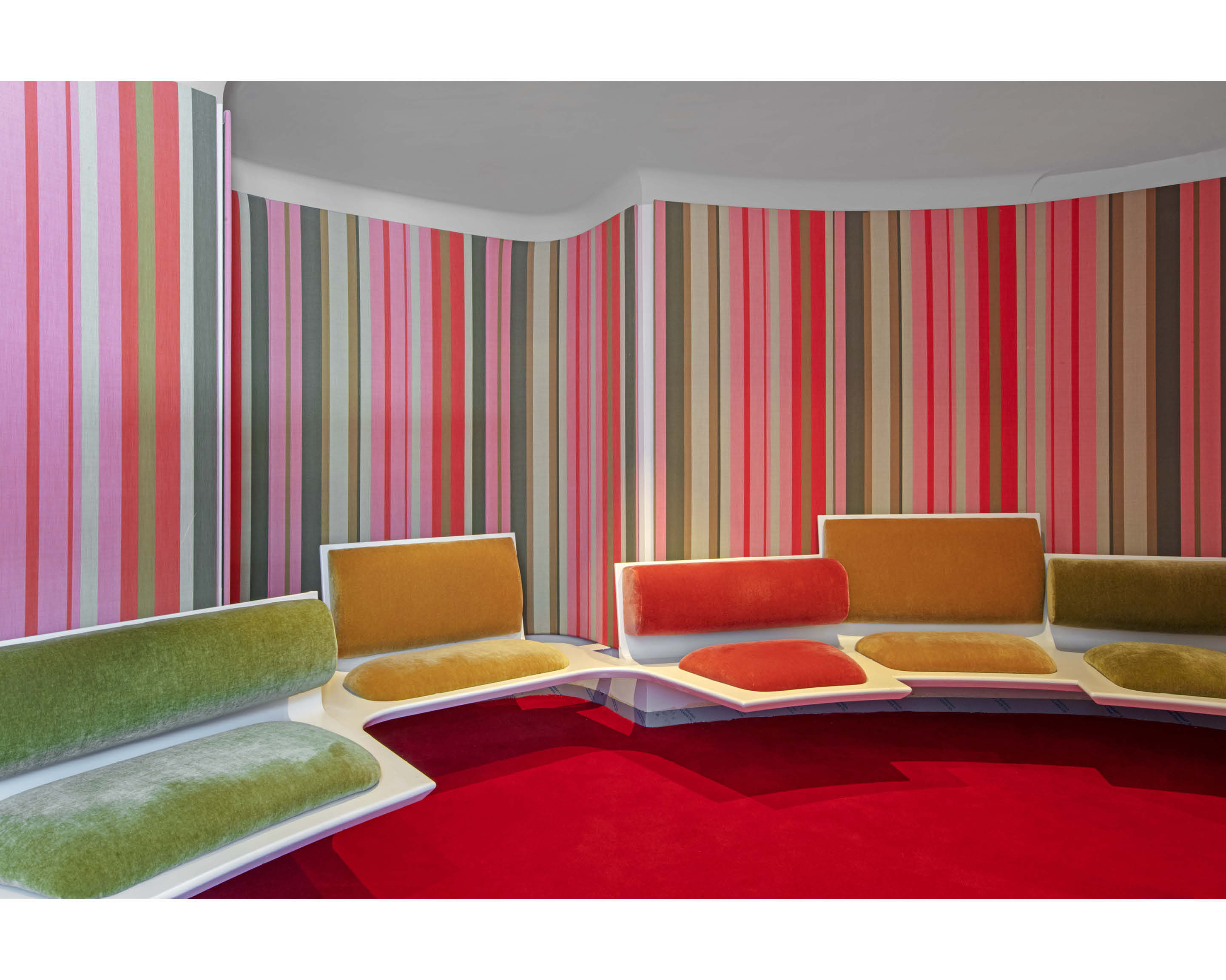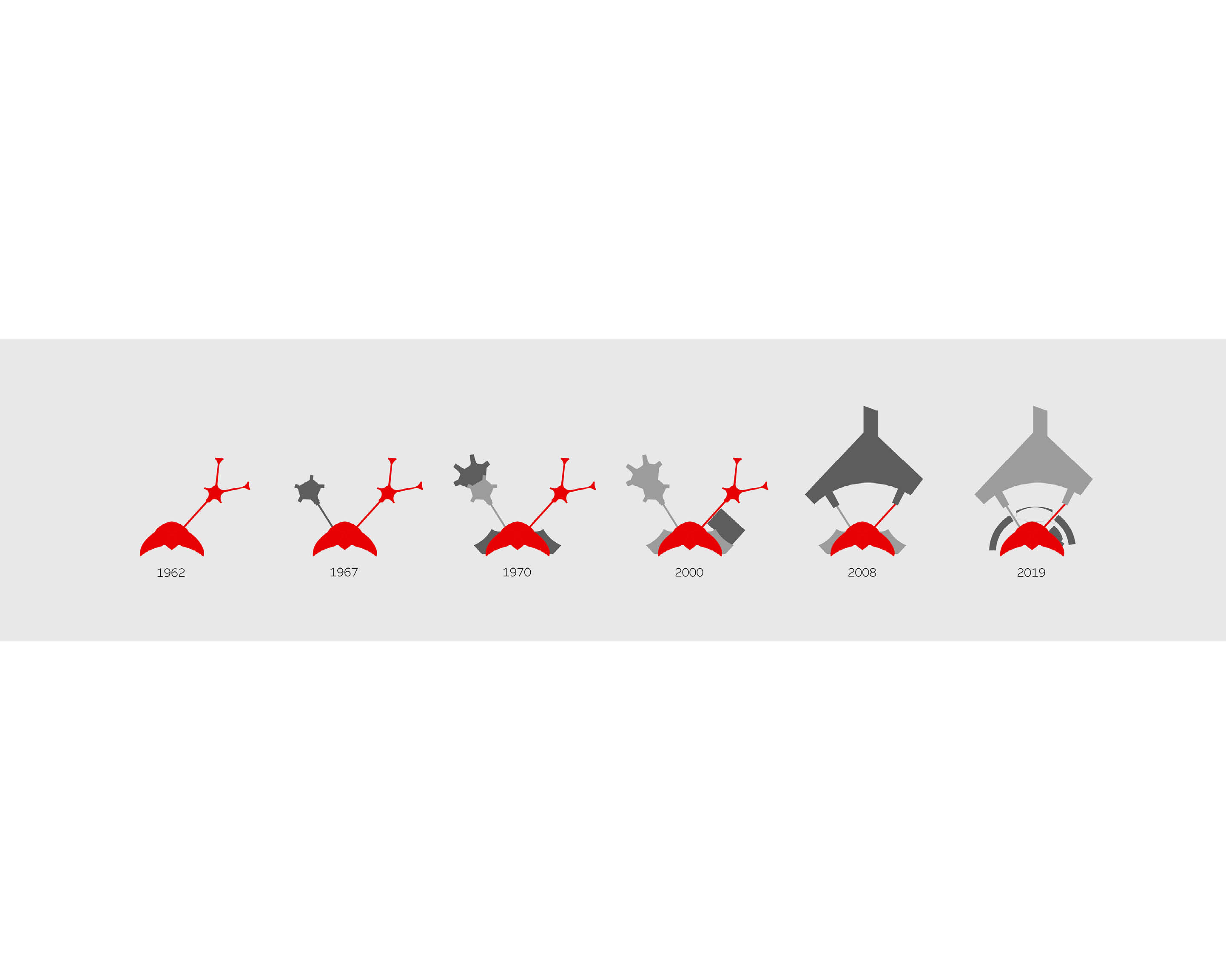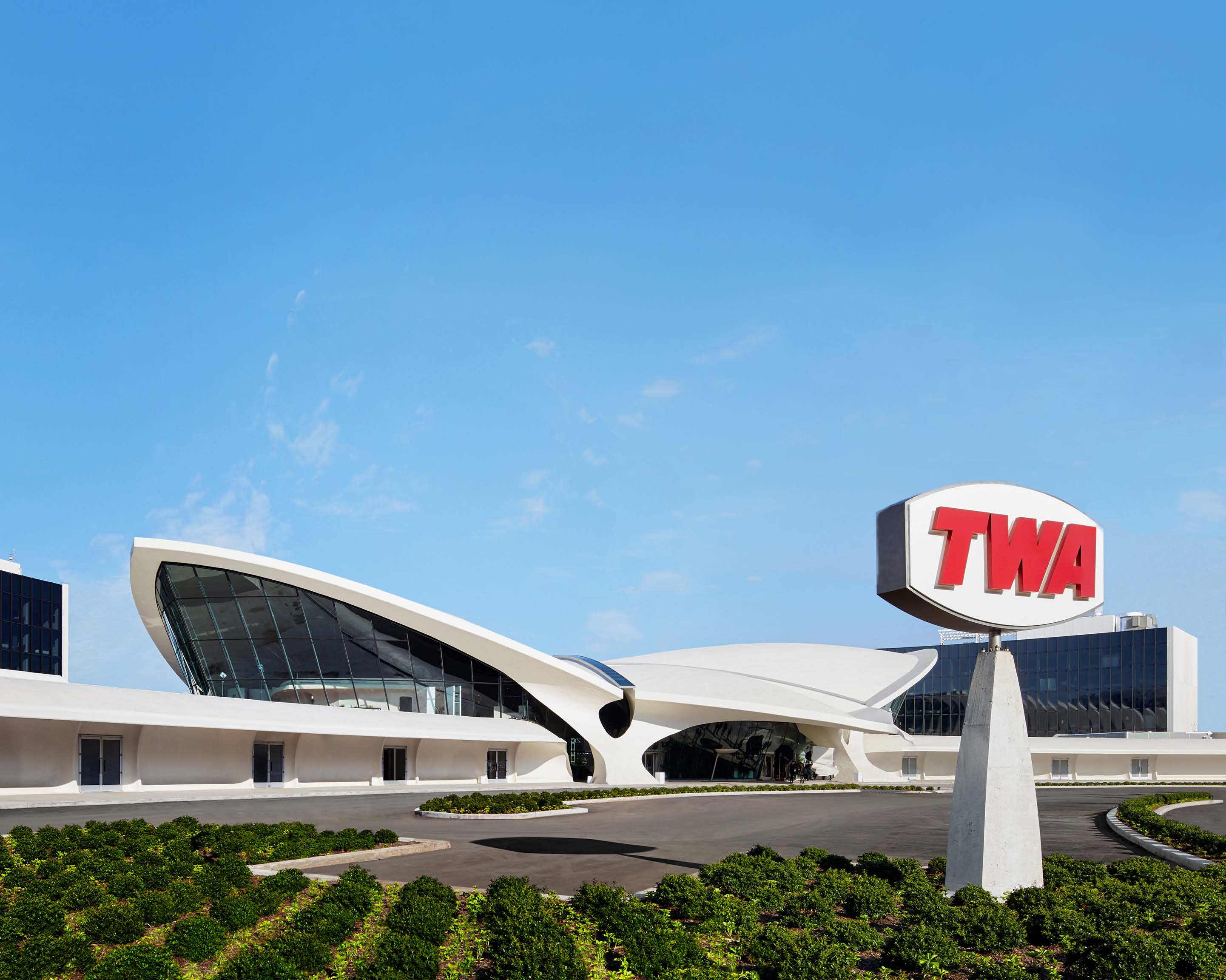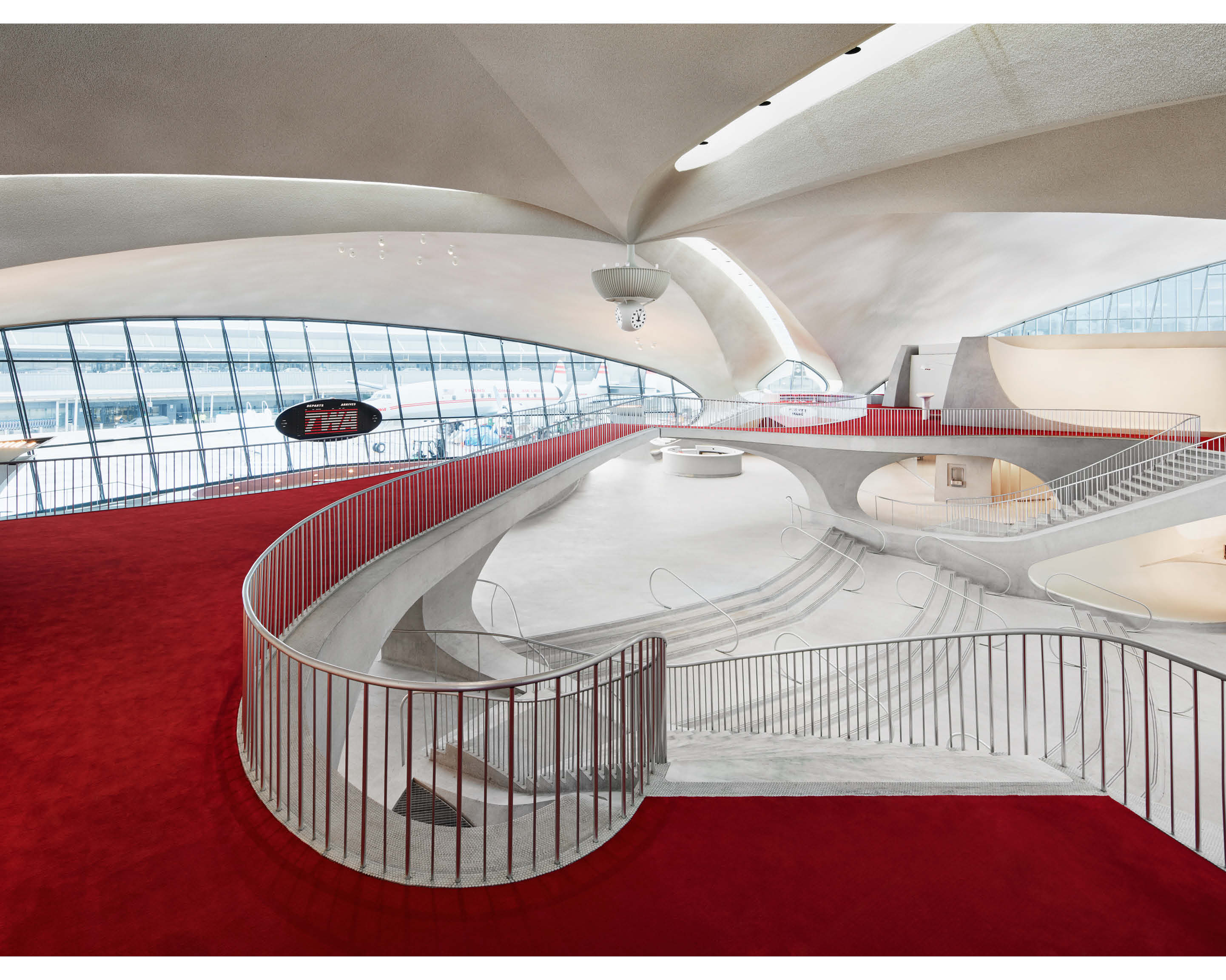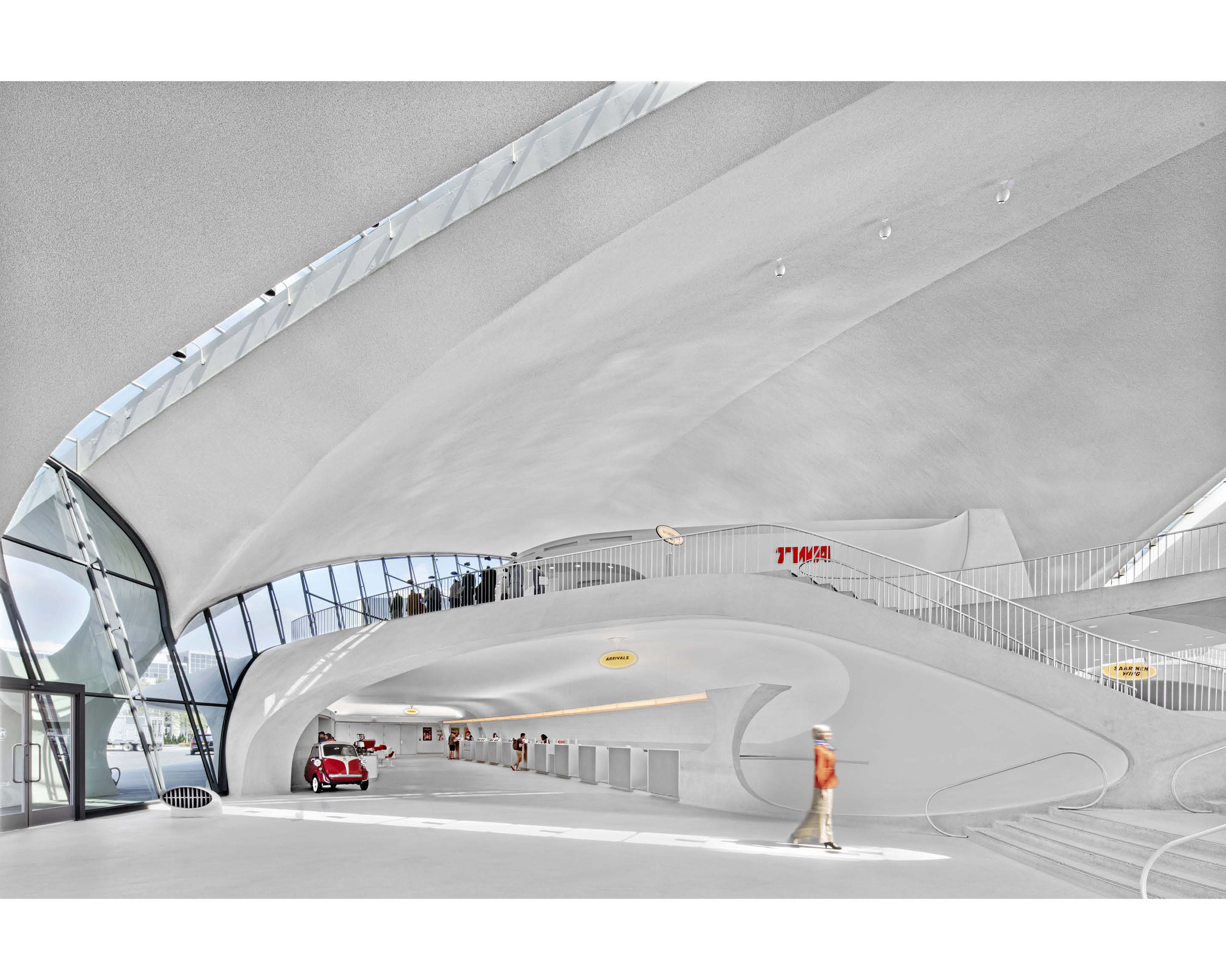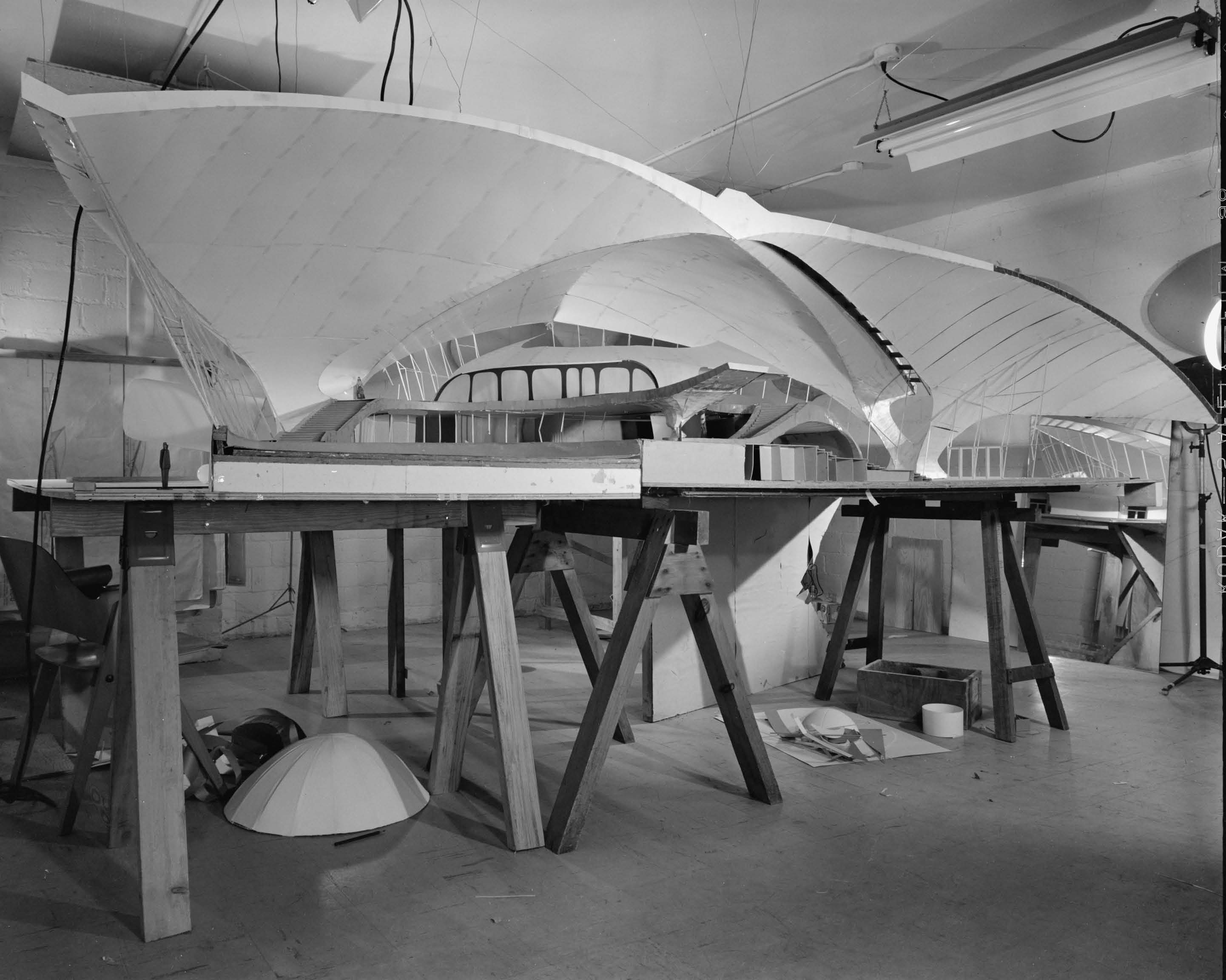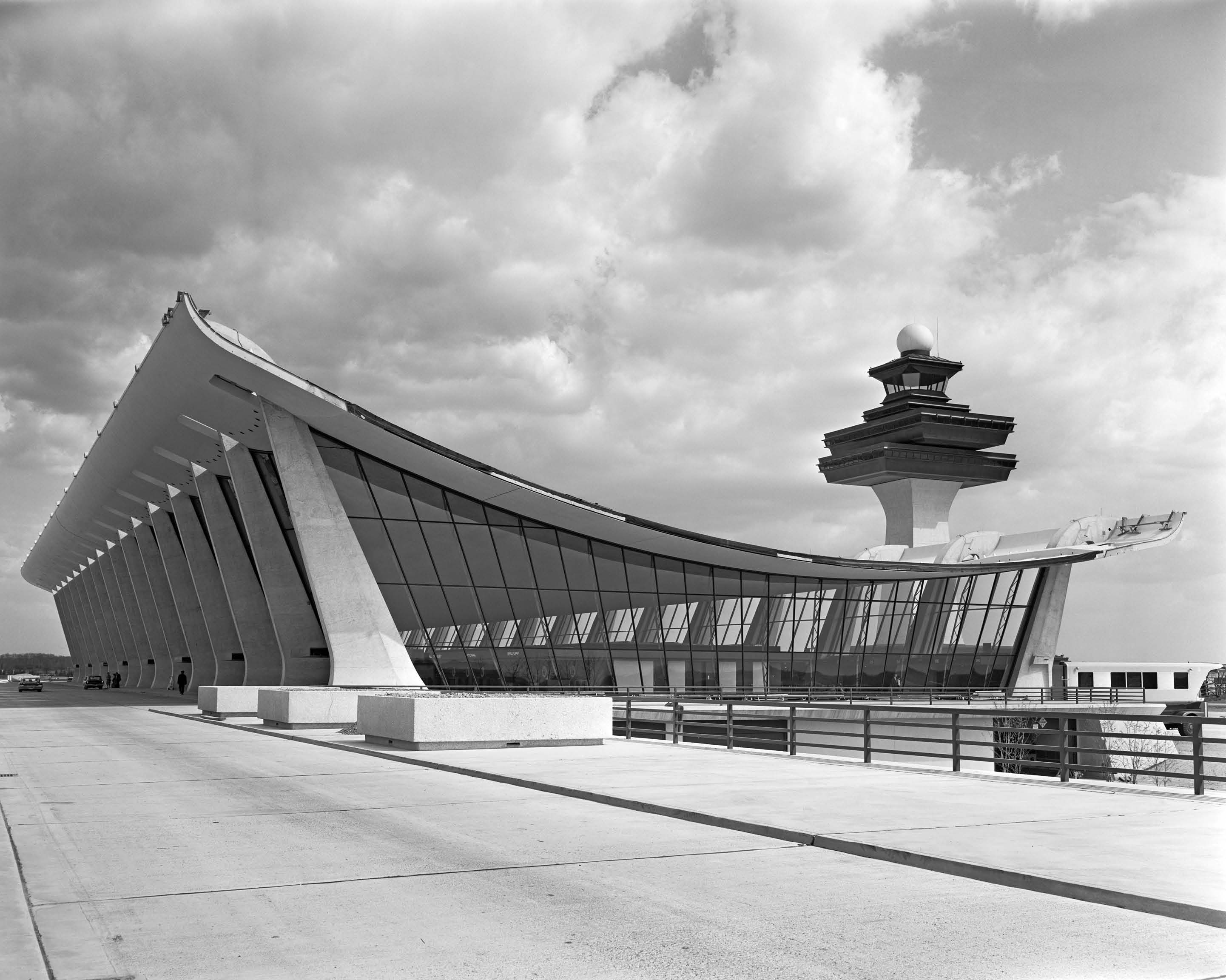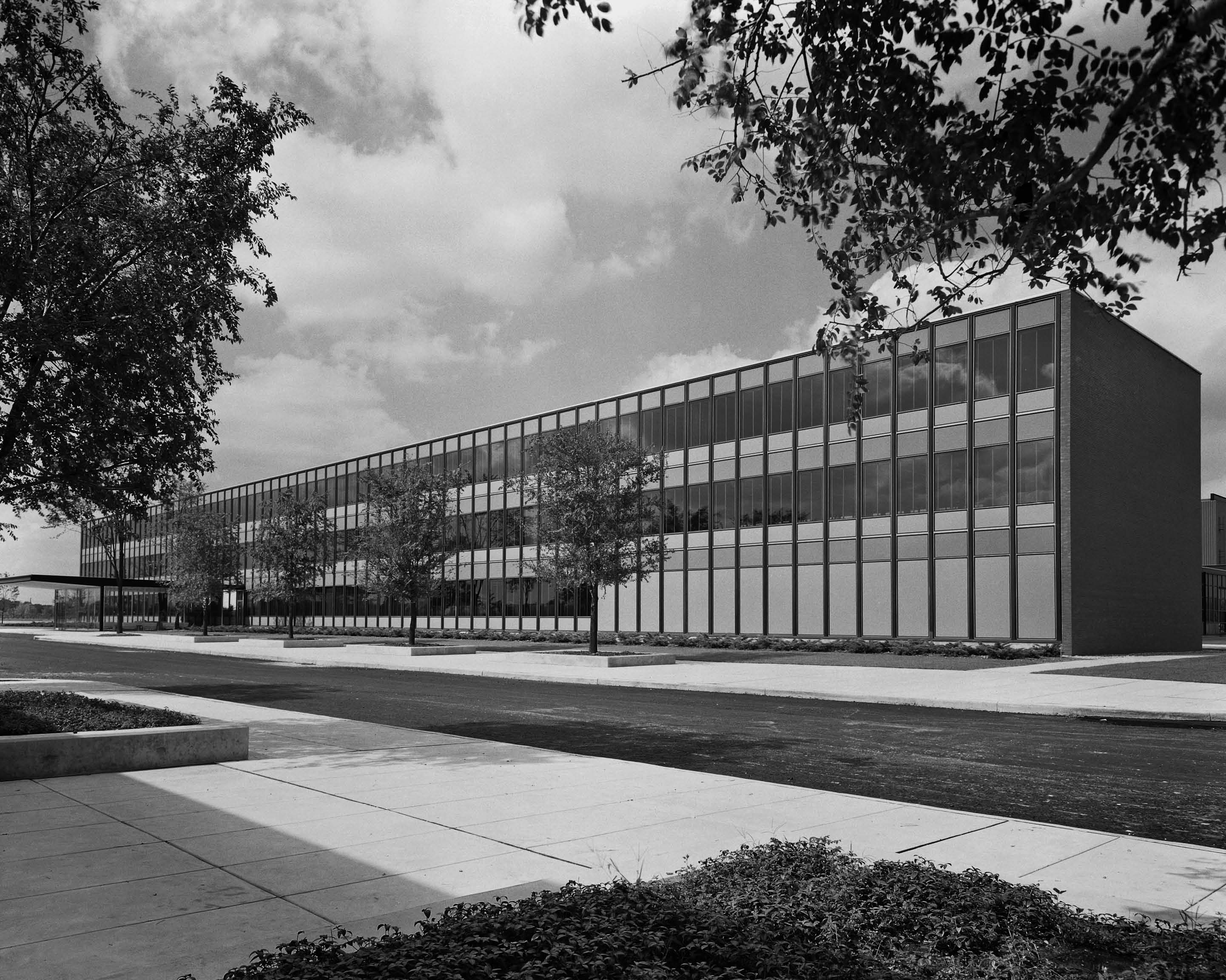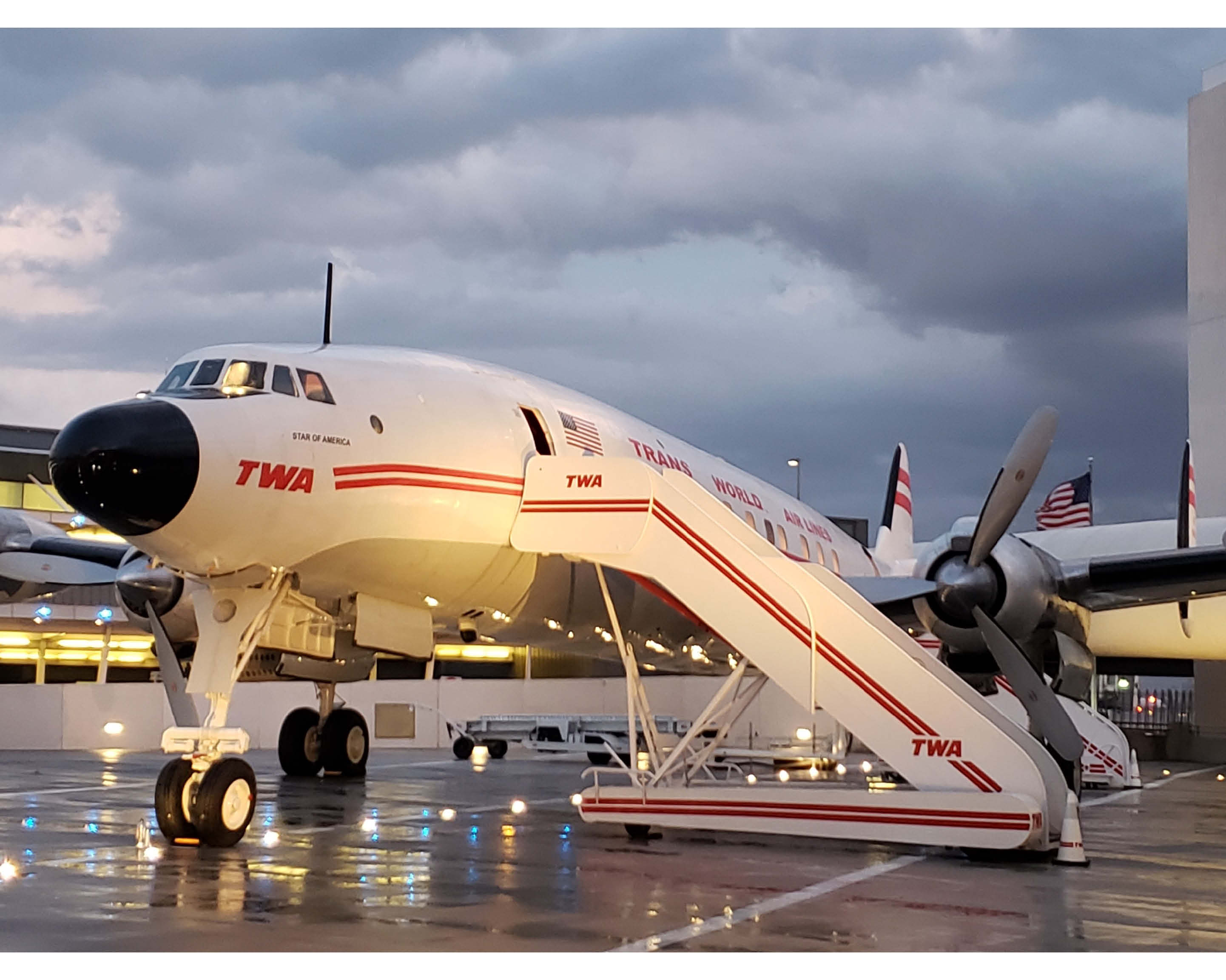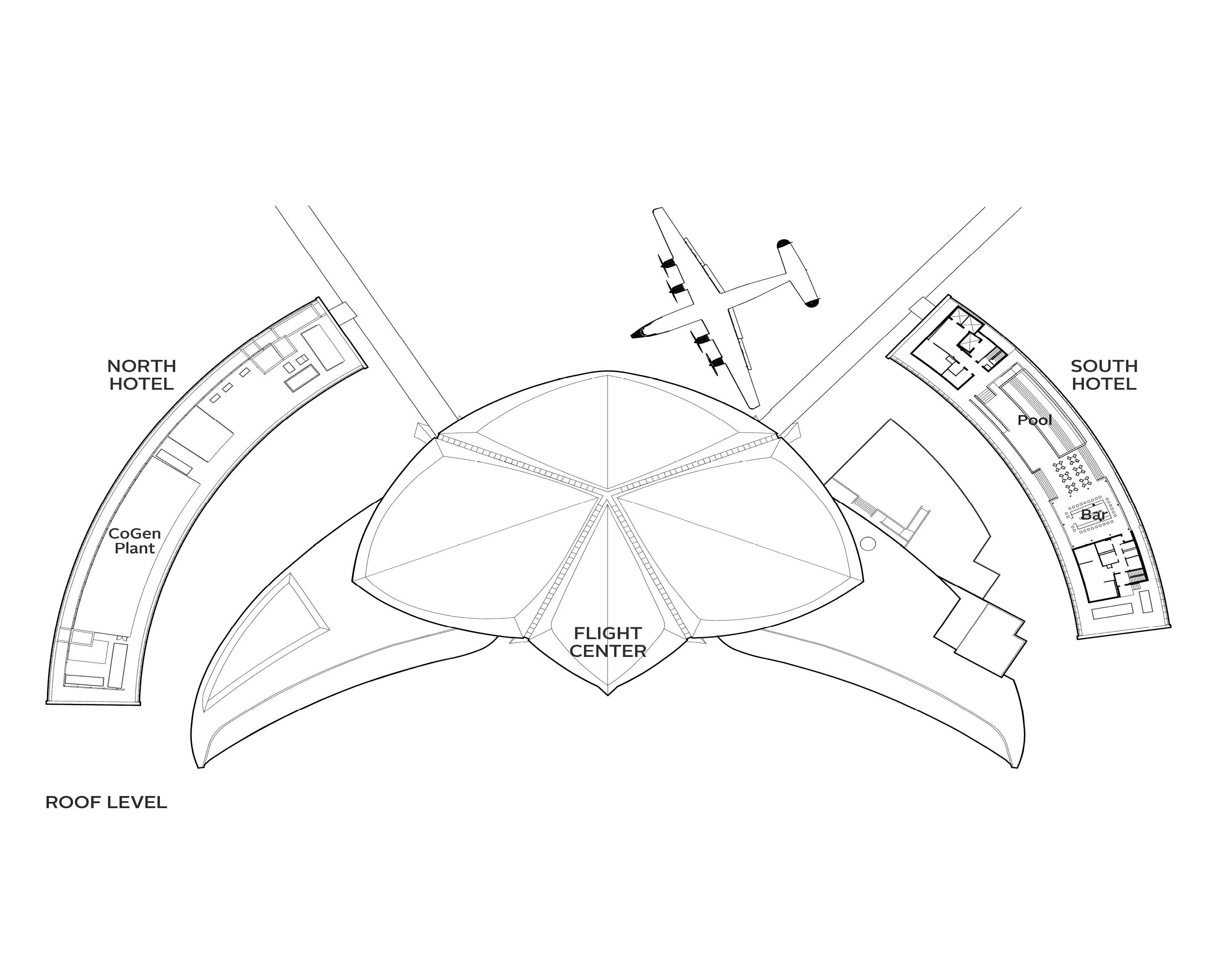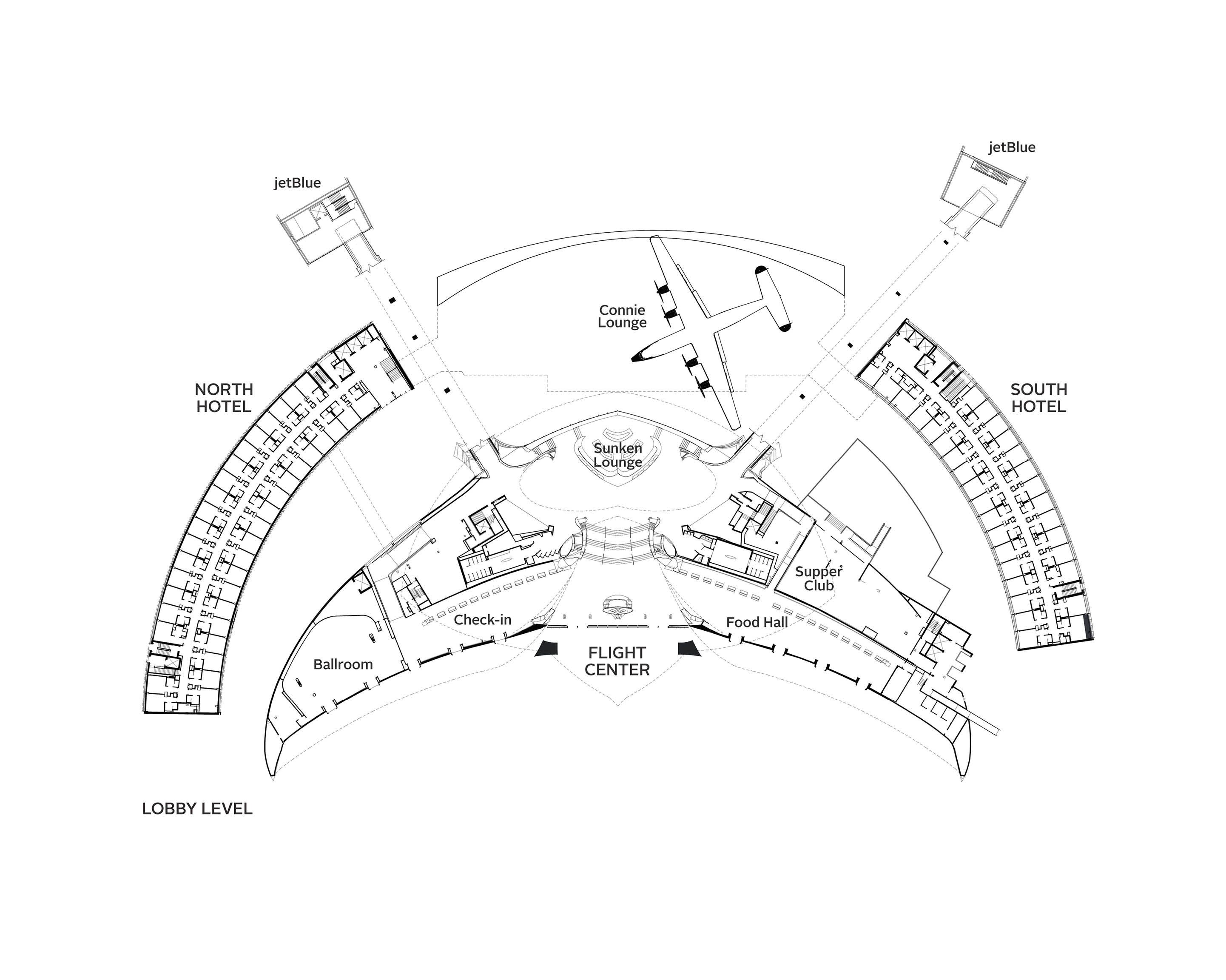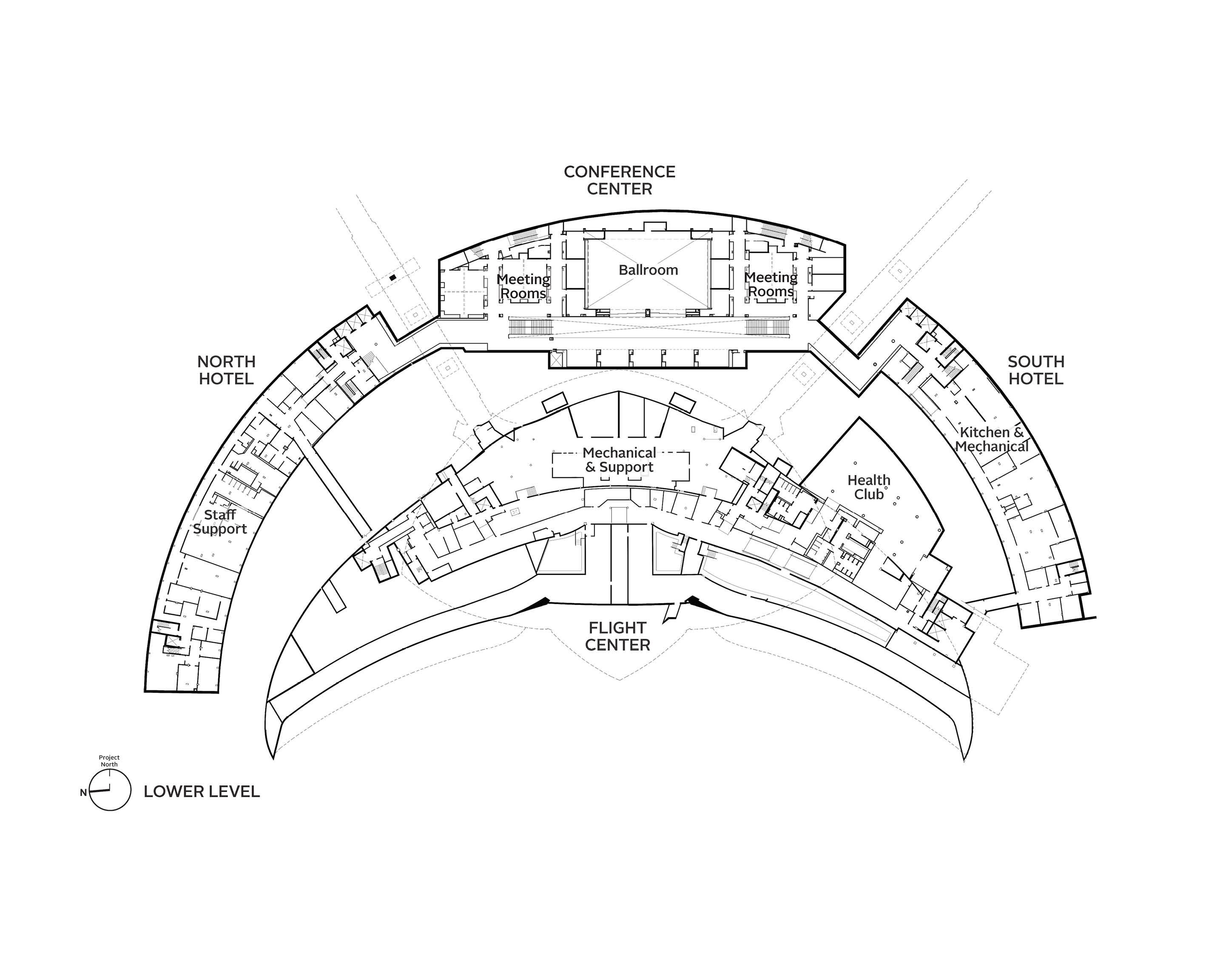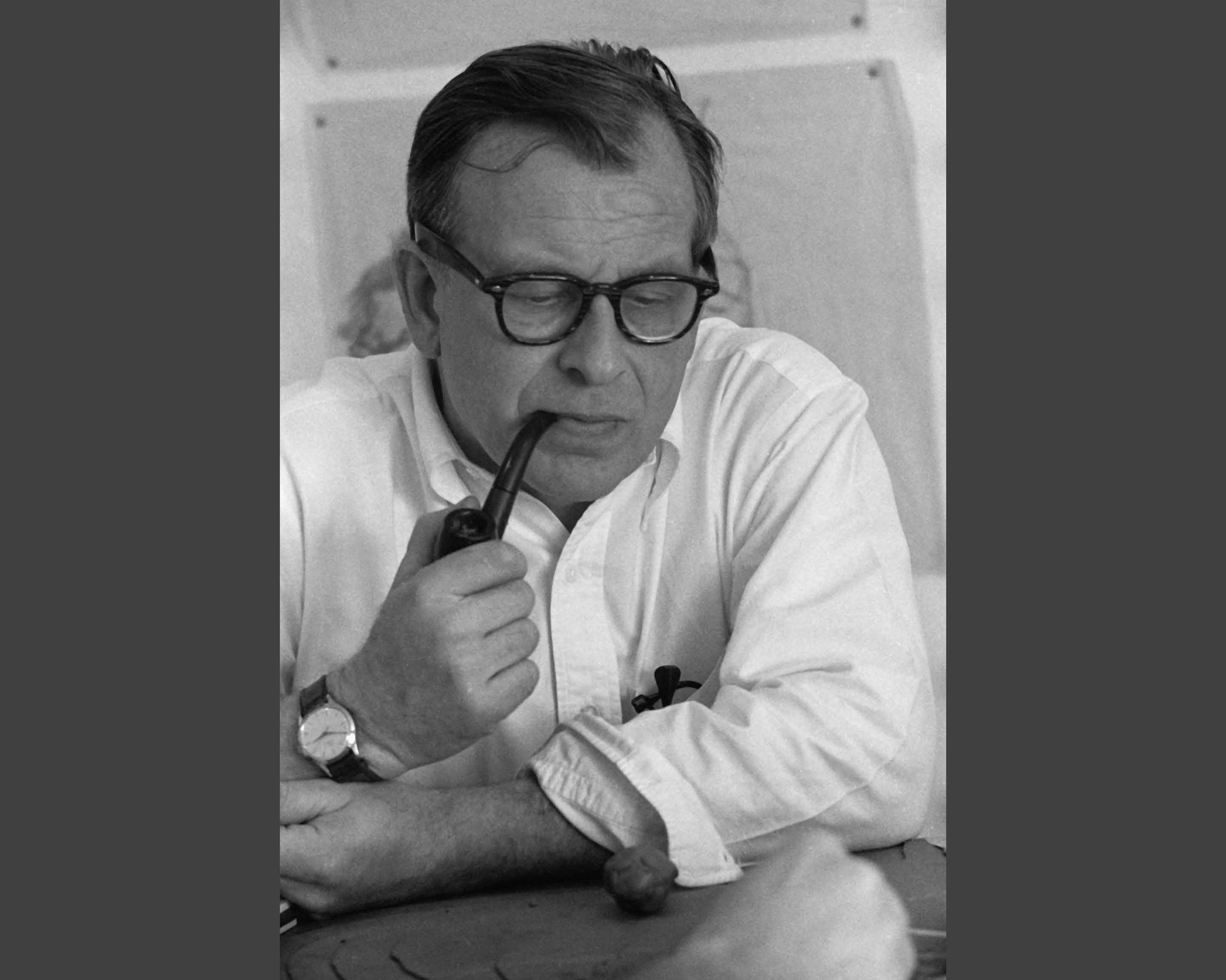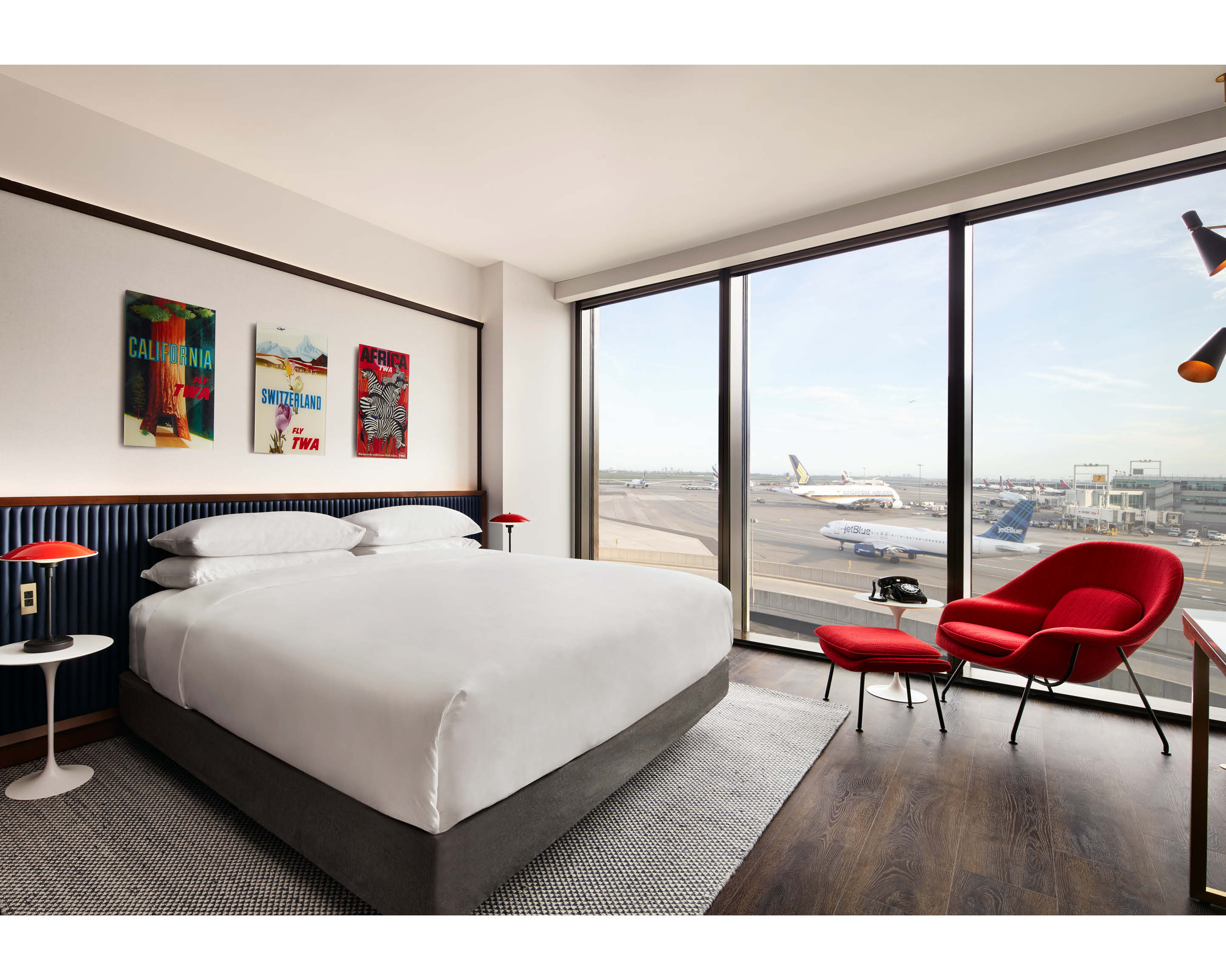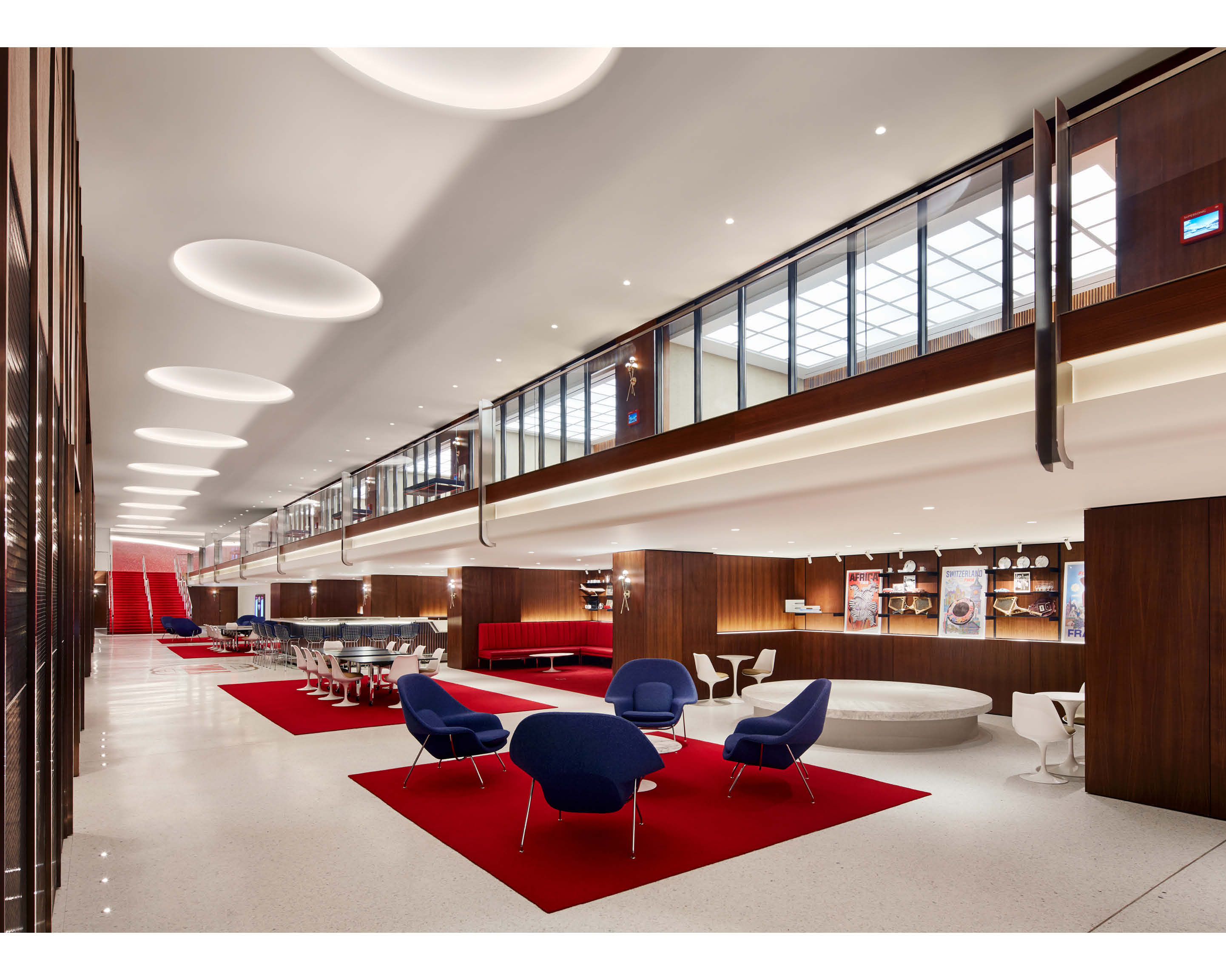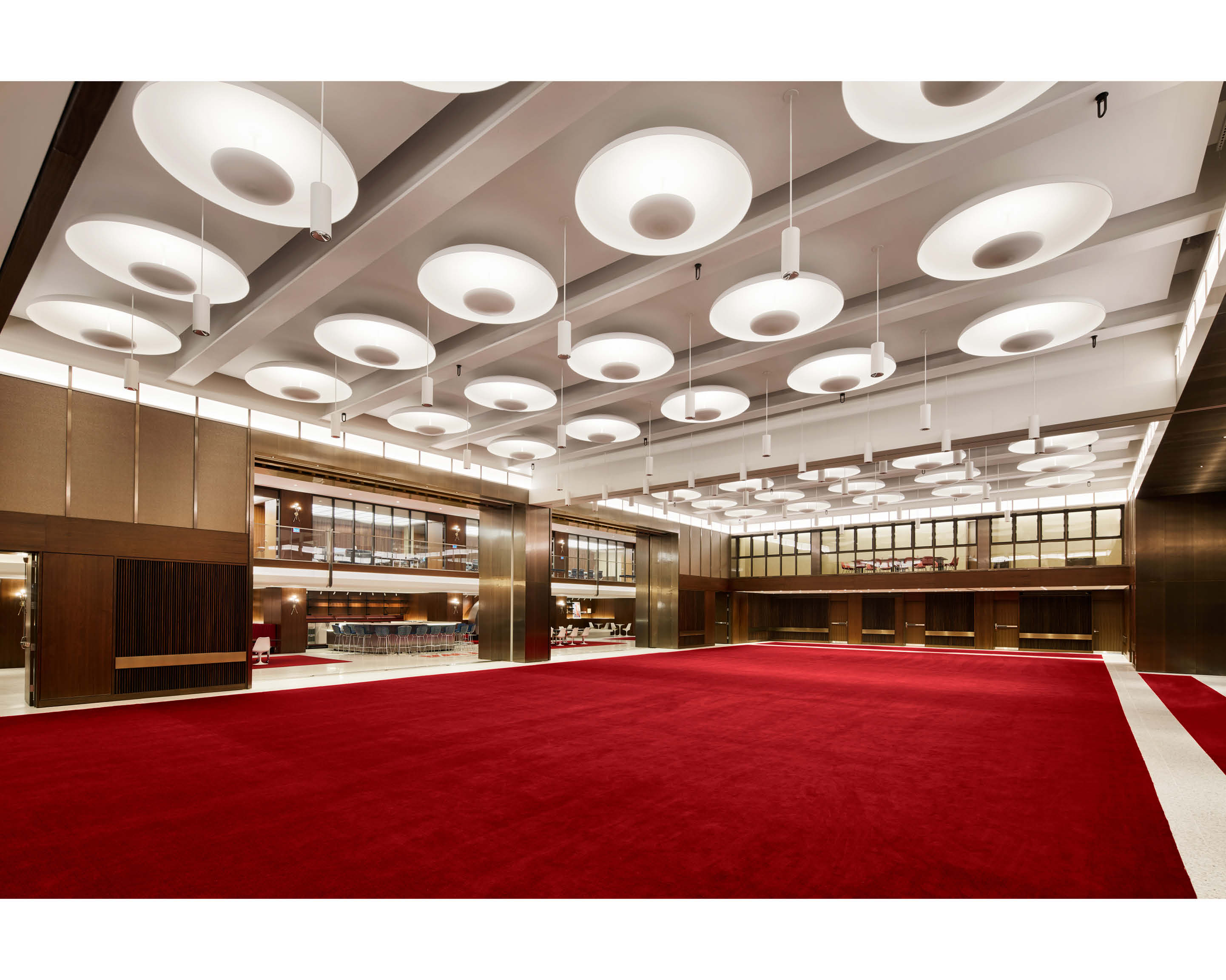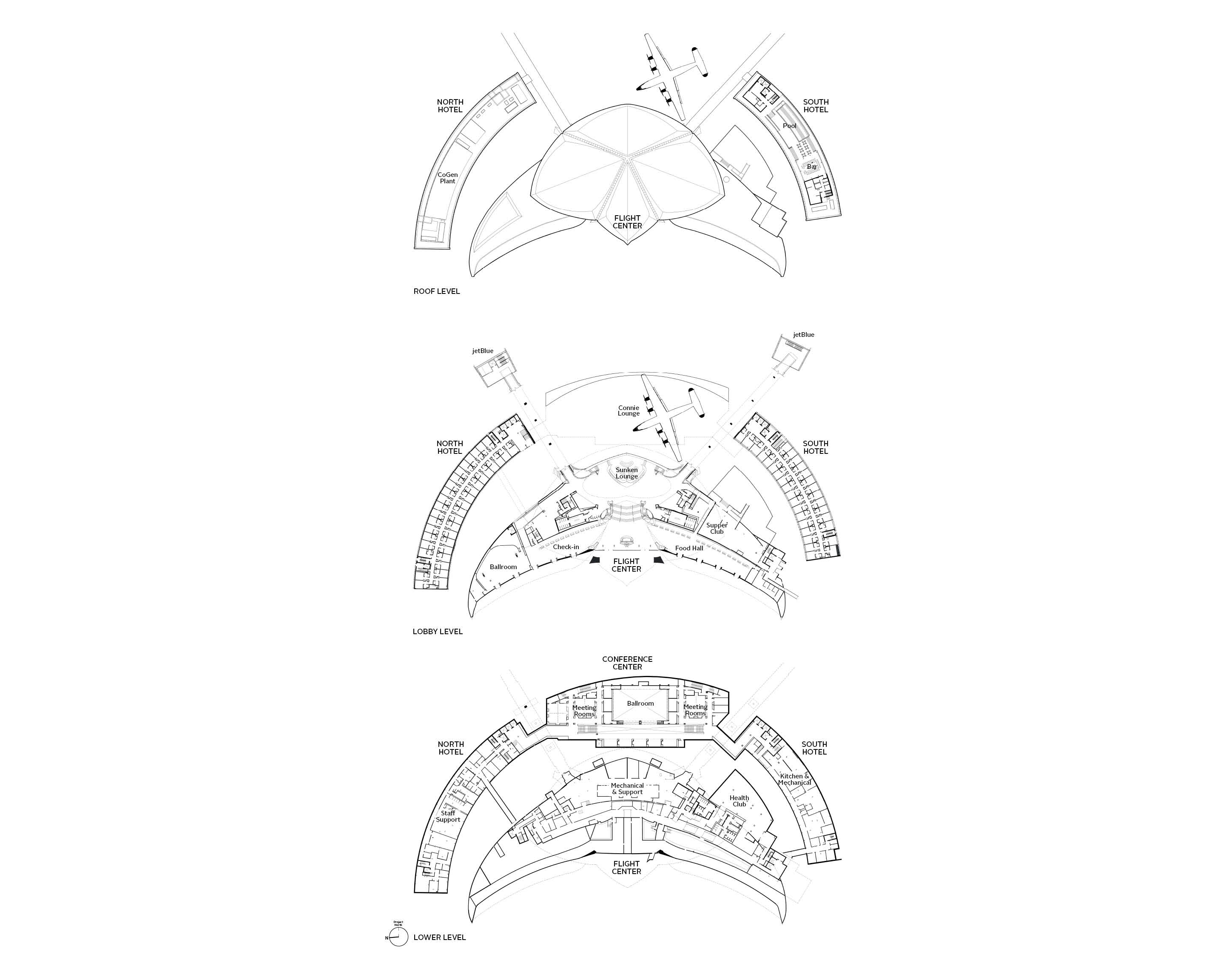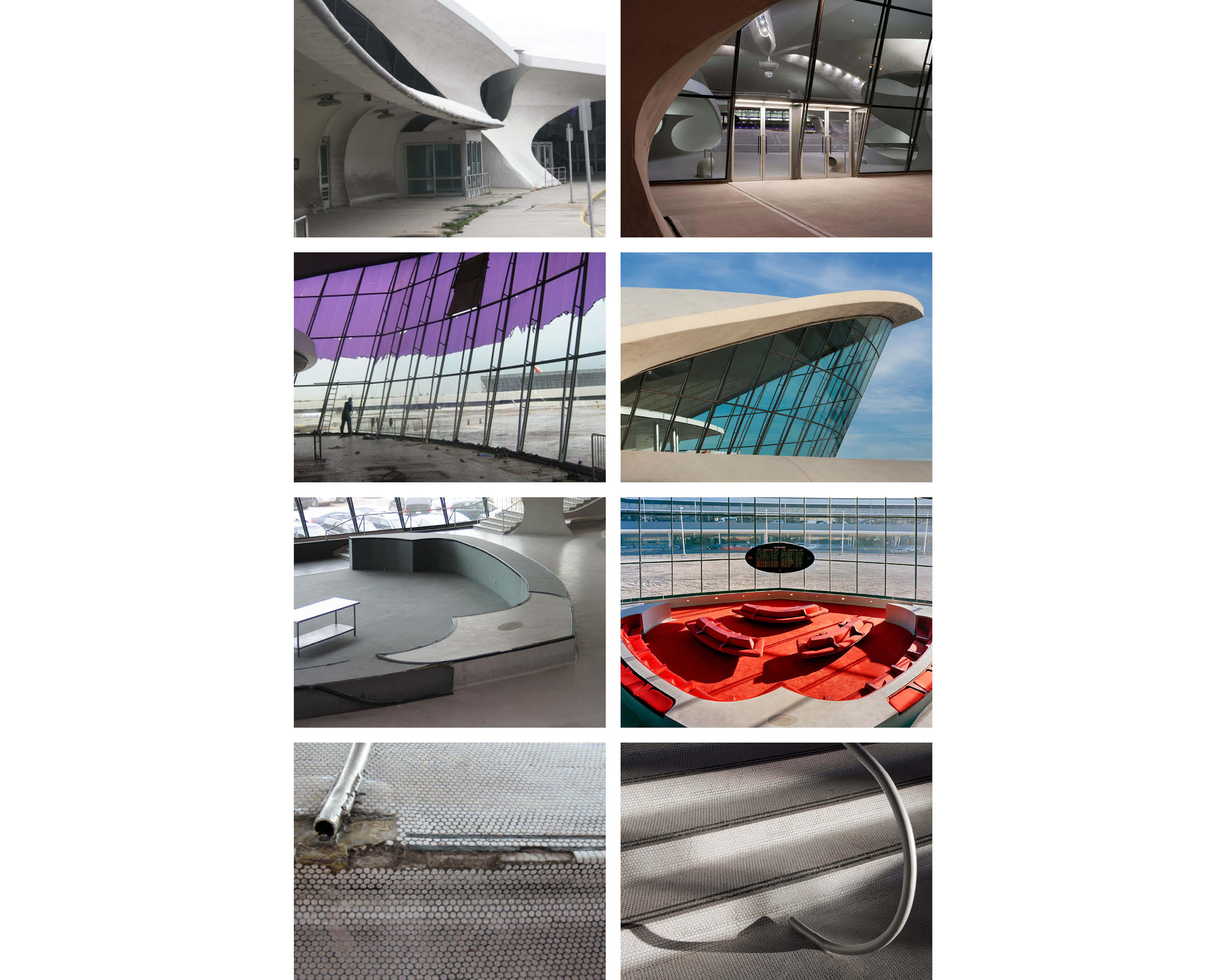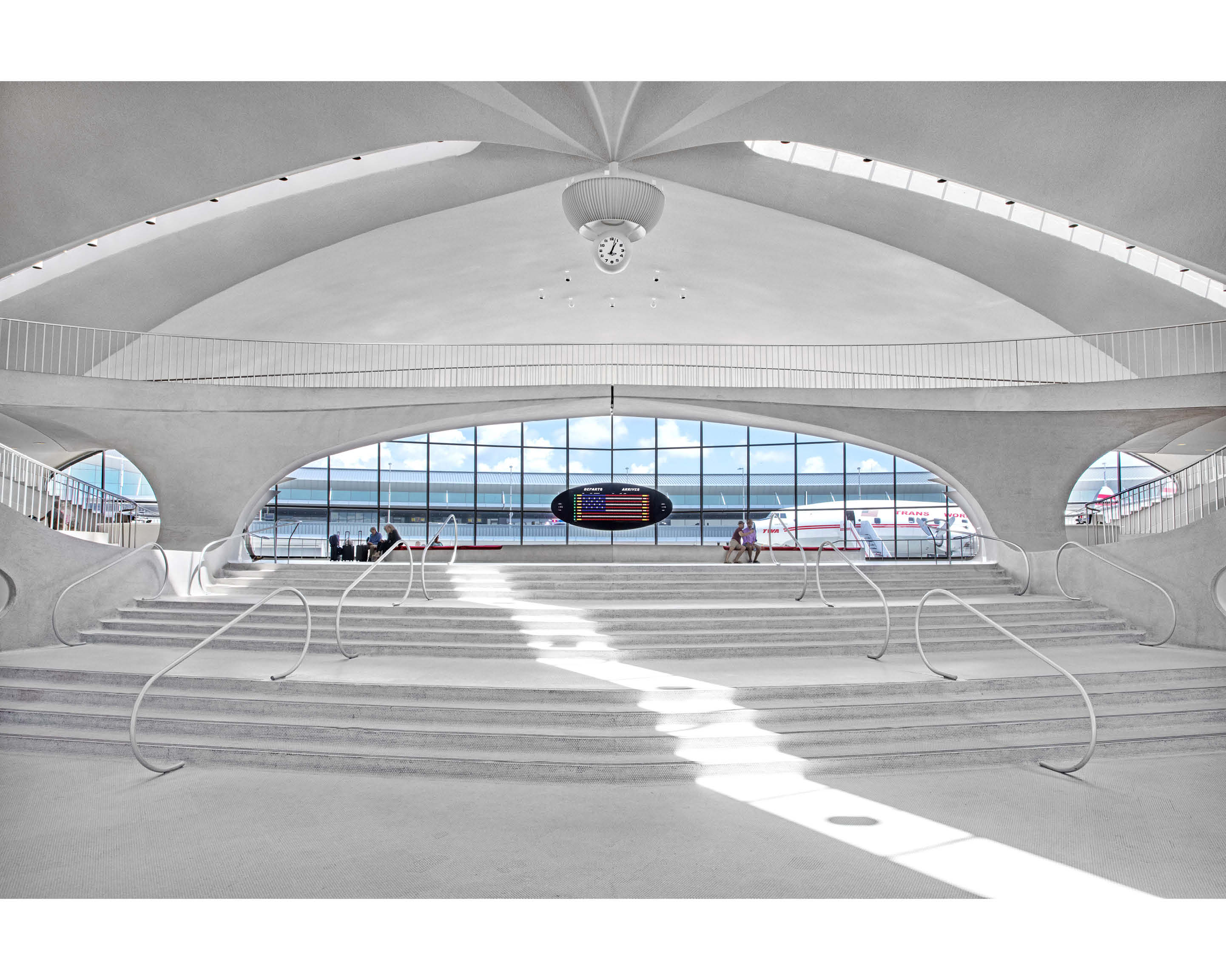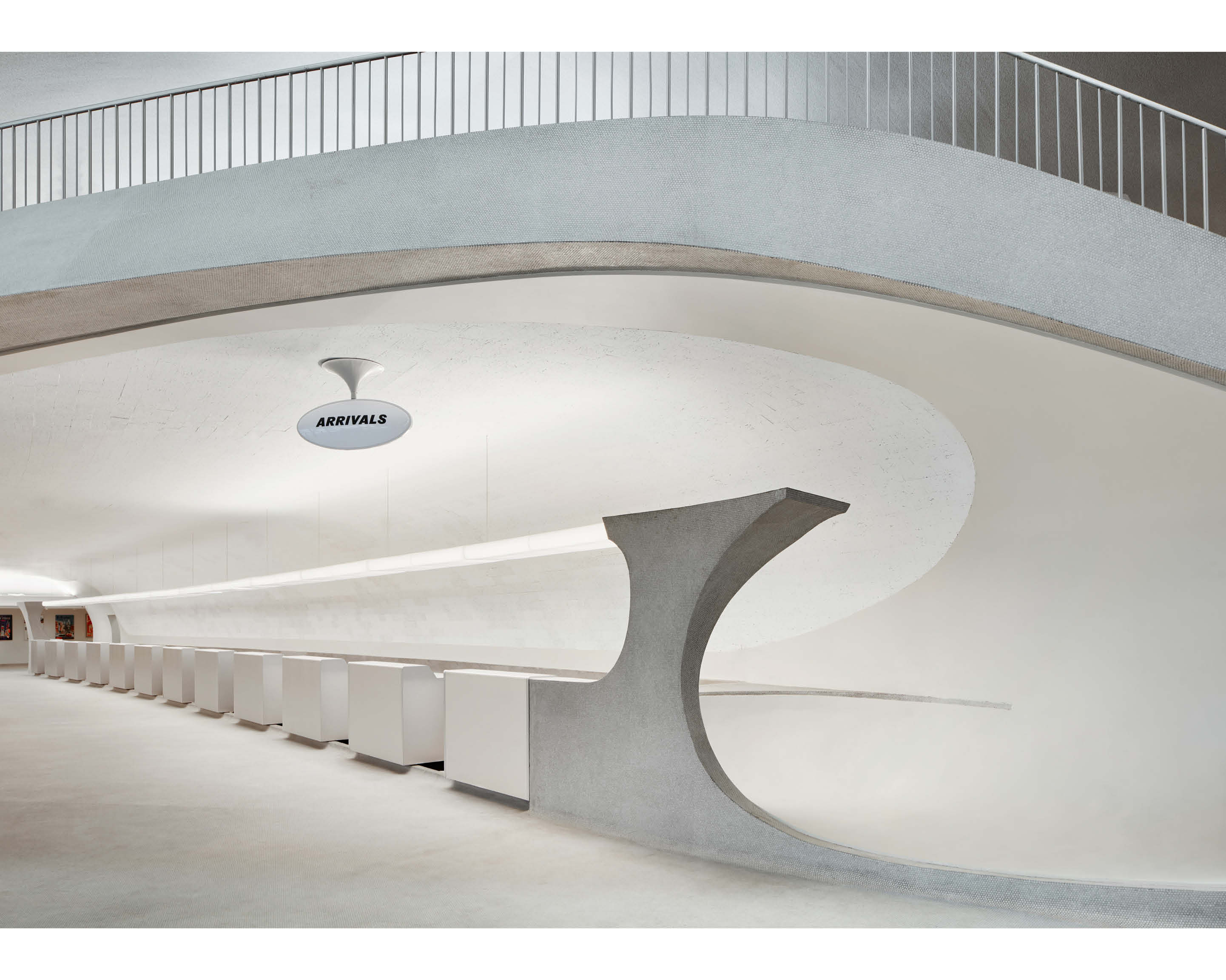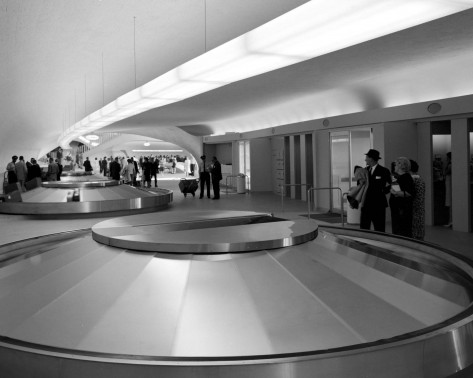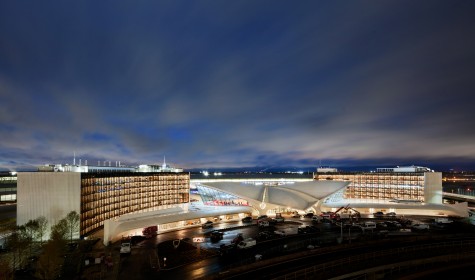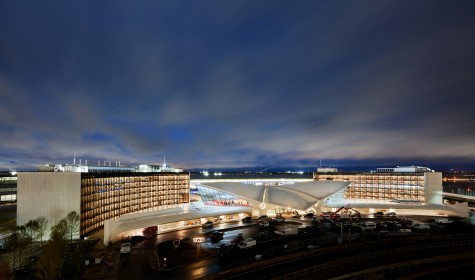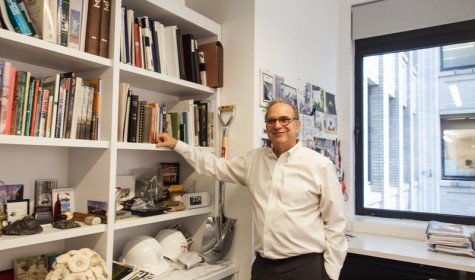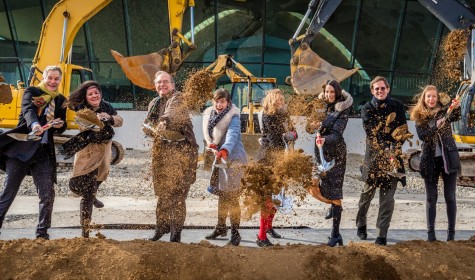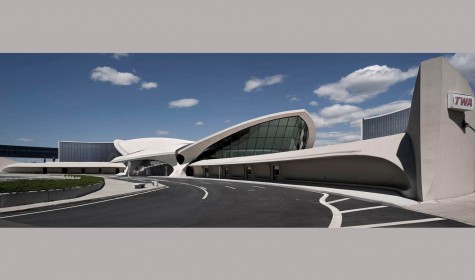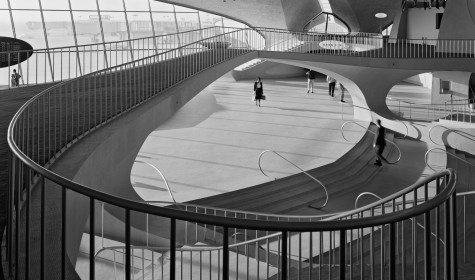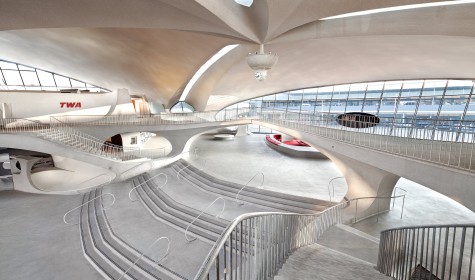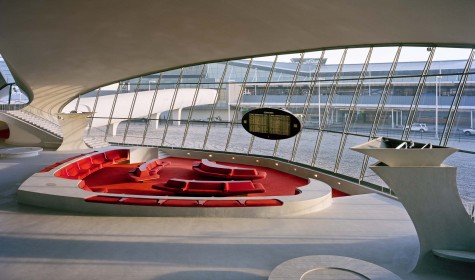TWA Hotel Exhibit
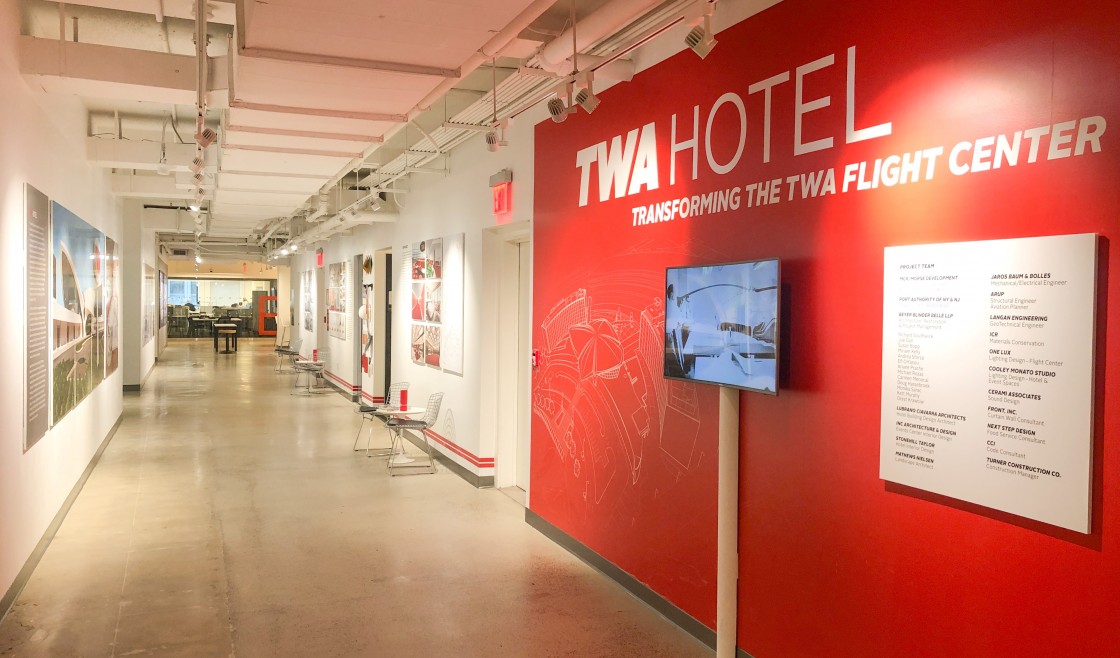
The current exhibit in the main gallery celebrates Eero Saarinen’s mid-century masterpiece reactivated in 2019 as a hotel, restaurant, and conference center.
The TWA Flight Center, designed by Eero Saarinen and Associates at John F. Kennedy International Airport in New York City, is one of the most significant examples of mid-century modern architecture. Completed in 1962, the Flight Center is a symbol of the progressive idealism of the 1960’s and an expression of Saarinen’s innovative genius. Over time, the landmark terminal was subjected to a series of compromising alterations, additions and deferred maintenance. Unable to adapt to the rapidly changing aviation industry, the terminal was effectively obsolete within a decade of opening. Ultimately, TWA ceased operations in 2001 and the building was abandoned. In 2015 MCR/Morse Development was selected as the developer for the conversion of the Flight Center into an airport hotel. Vacant for 18 years, the TWA Hotel opened in 2019.
In 1995, Beyer Blinder Belle was engaged by the Port Authority of New York & New Jersey to serve as the historic preservation consultant for the building. As part of this effort, BBB listed the building on the National and State Registers of Historic Places, and prepared Historic American Building Survey (HABS) documentation. BBB also developed preservation and concept master plans for the Flight Center, and in 2008, undertook the Phase I restoration including improvements to the exterior concrete and curtain wall, removal of building additions, and restoration of the historic lobby spaces.
Beyer Blinder Belle was hired in 2015 by MCR/Morse Development to serve as the Architect of the TWA Hotel project. BBB worked with a talented team of architects, interior designers, engineers and builders in the successful execution of the project. The challenge was to integrate contemporary technology and hospitality requirements while maintaining the character of the landmark structure. To achieve this objective, the design incorporates a significant adaptive reuse of Saarinen’s TWA Flight Center, the introduction of two new hotel buildings on a constricted site and the construction of a large underground event space.
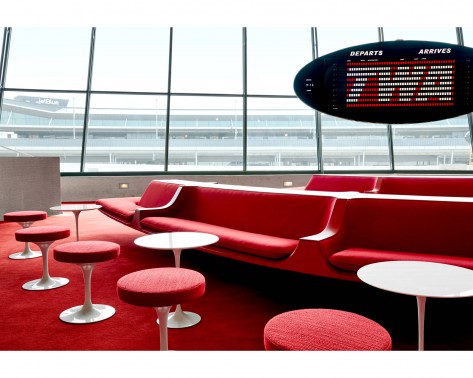
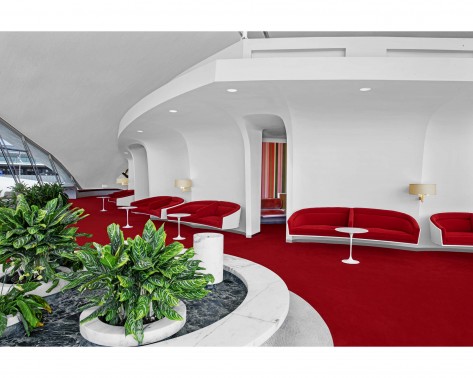
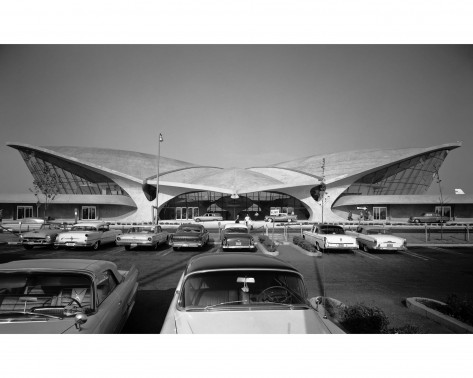
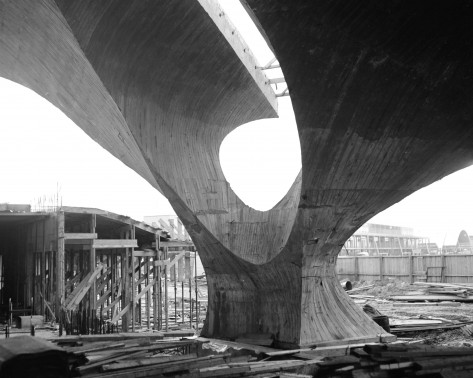
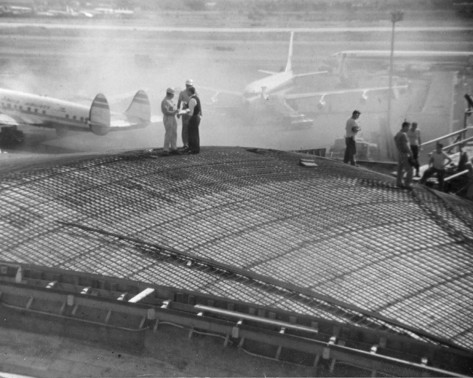
Scroll through the Project:
The Project
The TWA Hotel, opened in May 2019, consists of the historic Flight Center, two new hotel structures, and a subterranean event space. The Flight Center is the cornerstone of the 392,000 SF project, serving as its hotel lobby. The two new 7-story hotel wings house 512 rooms and provide a neutral background for the Flight Center. Capping the hotel structures, the south hotel building has a rooftop pool and bar, and the north hotel building houses a 1.3 MW co-generation plant. The 46,000 SF underground event space consists of a 7,000 SF banquet hall and 43 additional meeting rooms. Constructed 29 feet below grade on the tarmac between the historic flight tubes, the event space is set 20 feet below the water table. The four components of the complex are linked by the flight tubes, providing access to the hotels and event spaces, and a system of underground service tunnels. A restored 1958 Lockheed Constellation sits on the new tarmac and houses a special cocktail lounge.
Scroll through the Restoration:
Restoration
In its 40 years of operation, the TWA Flight Center suffered a number of additions and modifications which significantly altered Saarinen’s original landmark design. As part of the Section 106 preservation review and the historic tax credit approval, the Flight Center underwent a restoration in accordance with the Secretary of the Interior’s Standards for Preservation. The restoration was informed by comprehensive research and a detailed conditions assessment of the building. The Saarinen Archives at Yale University yielded original architectural drawings, specifications, photographs, and project material samples. Central to the project was the restoration of the significant defining features of the Flight Center to the 1962-1970 Period of Significance with the primary objective to preserve the exceptional character of the building. New interventions were designed to be complementary but distinguishable from Saarinen’s original design.
Exterior improvements included the replacement of the skylights and the restoration of the curtain wall with new tempered glass and neoprene zipper gaskets, to match the original. The building entrances were reconstructed utilizing original contract drawings. The concrete roof was repaired and recoated, and the landscaping and parking in the front of the terminal recreated. The penny tile finishes on the floors, walls, soffits and fascias were painstakingly restored with over 15 million units of 1/2 inch diameter ceramic mosaic tile custom-made for the project. Original shop drawings guided the reconstruction of the sunken lounge in the upper lobby and all new lighting was installed utilizing LED technology throughout the Flight Center. New ADA access ramps connecting the upper and lower lobbies, restored ticketing desks for the reception check-in and food halls, and the full restoration of the TWA first class Ambassador Club completed the work of the TWA Flight Center.
Scroll through Saarinen’s story:
Saarinen
Eero Saarinen, architect of the TWA Flight Center, was born in Finland in 1910, son of noted architect Eliel Saarinen. Moving to the United States with his family in 1923, Saarinen opened his own office in Bloomfield Hills, Michigan in 1950.
One of the most celebrated of the post-war architects, Eero Saarinen was the designer of the General Motors Technical Center in Michigan; the United States Embassies in London and Oslo; the Chapel and Kresge Auditorium at MIT; corporate headquarters for IBM, John Deere and CBS; and the Gateway Arch in St. Louis. The TWA Flight Center was one of Saarinen’s last and most revolutionary projects. Designed at the same time as Dulles International Airport near Washington DC, the two terminals were distinctly different prototypes for the modern jet-age. While the more uniform form of Dulles facilitated a substantial extension in 1996, TWA’s unique design could not accommodate expansion.
The TWA Flight Center is one of the earliest and most expressive free-form thin-shell buildings, engineered by Ammann & Whitney, and serves as a visual metaphor of flight. The building was highly anticipated during its development and opened to great acclaim in 1962. The work at the Flight Center was a rich collaboration of some of the most notable designers of the time including Charles and Ray Eames, Raymond Loewy, Florence Knoll, and Warren Platner. Eero Saarinen died suddenly in 1961 at age 51 and never saw the completion the following year of one of his greatest masterpieces.
The design team includes:
Beyer Blinder Belle: Project and Preservation Architect
Lubrano Ciavarra: Design Consultant and Design Architect for the Hotel Buildings
INC Architecture & Design: Conference and Event Space Interior Design
Stonehill Taylor: Hotel Room Interior Design
Mathews Nielsen: Landscape Architect
